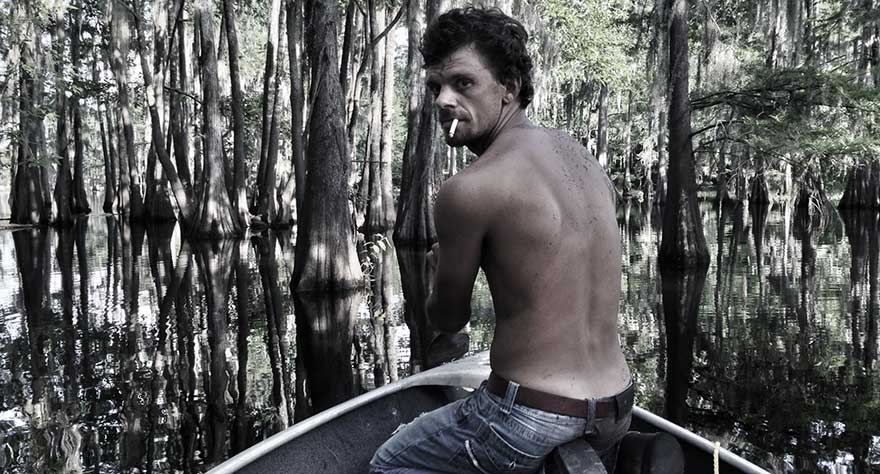TIFF 2015: The Other Side

After closing out his Texas Trilogy with Stop the Pounding Heart, Roberto Minervini goes down a much darker path with The Other Side. Taking his camera to Louisiana (interestingly enough, he learned about the people in this film from his cast in Pounding Heart), he profiles Mark (Mark Kelley) and Lisa (Lisa Allen), a couple both suffering from addiction while living on the very bottom of the poverty line. Minervini’s direction will fascinate some and leave others feeling critical of his methods; Kelley and Allen (along with everyone else in the film) play themselves, and Minervini constructs moments out of their lives, but the distinction between construction and observation is never made clear. It’s a blending of reality and fiction that can feel both exploitative and exciting in the way it brings out a sympathetic, human side to these people that gets beneath their grimy, undesirable surface.
The majority of The Other Side follows Mark, Lisa and people around the same community as they more or less drink, fuck, do drugs and try to earn some money, and Minervini’s incredible level of access leads to some images that’ll be hard to shake. Early on, Mark gives a pregnant stripper a shot of heroin, and then Minervini shows her performing for the small crowd of men in the strip club. And there’s a clear implication that, while the situations may be constructed, none of what’s actually happening (like the sex and drugs) is fake.
The casual statements of hatred towards Barack Obama heard throughout soon come to a head in the final stretch of the film, where Minervini leaves Mark and Lisa to follow a group of militiamen as they prepare for what they think is an inevitable war with the government. It’s a load of libertarian conspiracy theory lunacy, but these people clearly believe in all of it, going out and regularly training each other on how to defend themselves. Minervini’s choice to close the film on the militia blowing up a car decorated with anti-Obama graffiti while cheering “America!” may be a little too on the nose, but his gaze never feels like a screed towards the US. Instead, by capturing these people living as part of a social class largely ignored and neglected by the country’s institutions, it gives a better understanding of their feelings of anger and paranoia towards those in power.
